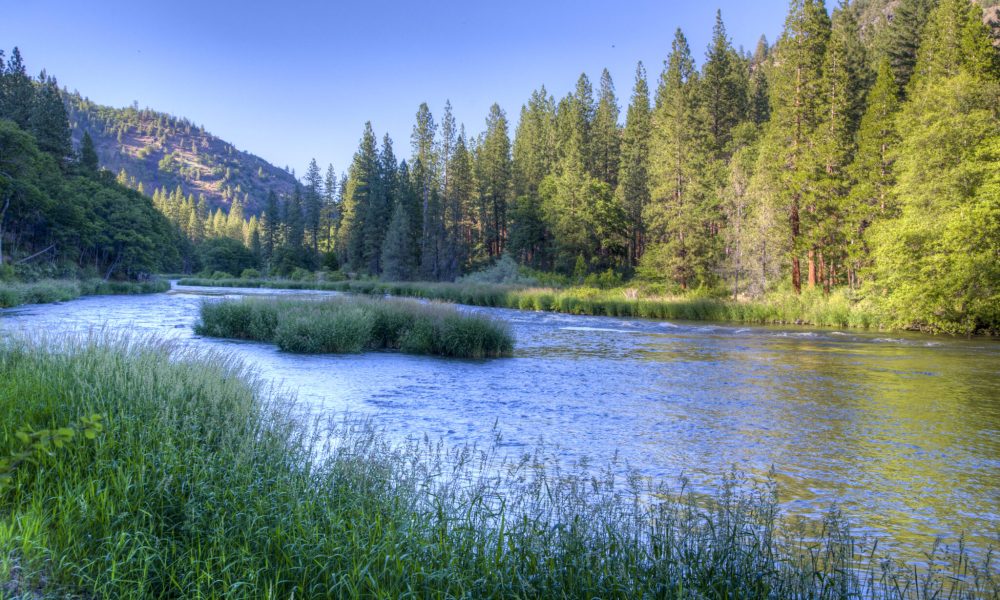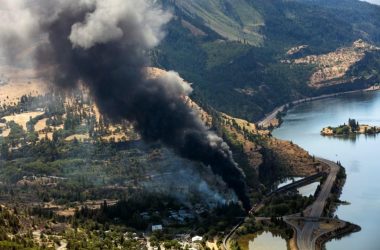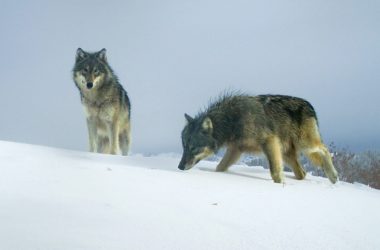A nearly two-decade campaign to remove hydroelectric dams and restore threatened and endangered fish on the lower Klamath River has cleared its final hurdle.
On Thursday, the Federal Energy Regulatory Commission approved the plan to remove four dams on the lower Klamath River, saying it was in the public interest. The commission is made up of five members appointed by the president.
It will be the largest dam removal project in the world, according to the nonprofit American Rivers, and state public utilities commissions in Oregon and California say it will cost around $500 million to complete.
Agencies from both states, as well as the nonprofit Klamath River Renewal Corporation, will oversee the removal. The Klamath River begins in southern Oregon and flows for more than 250 miles into northern California and the Pacific Ocean. The Klamath Basin is as large as Massachusetts and Connecticut combined, according to American Rivers.
The first and smallest of the four dams will be removed next summer and the three remaining dams will be dismantled by the end of 2024.

The four dams were built between 1918 and 1962 by what is now PacifiCorp to generate electricity. But today they contribute to less than 2% of the power the company generates.
In the decades that followed their construction, the dams, along with increased agricultural pressure in the basin, led to pollution and water shortages that decimated Klamath Basin salmon populations.
Several runs have gone extinct, and others have declined severely.
In 2002, an estimated 30,000 to 70,000 Klamath Basin salmon died when the Bush administration chose to limit water released to fish from Upper Klamath Lake, instead sending a greater portion of water to farms and ranches for irrigation. It was the largest ever salmon die-off recorded on the West Coast, according to the U.S. Fish and Wildlife Service.
Administration officials reversed the decision following the mass die-off, but it still ignited the fight to remove the dams by tribes and environmental groups.
For all five tribes within the Klamath Basin — the Hoopa, Karuk, Klamath, Shasta and Yurok — salmon have significant cultural and dietary value.
In a statement, Yurok Chairman Joseph James celebrated Thursday’s news from the energy commission.
“The Klamath salmon are coming home. The people have earned this victory and with it, we carry on our sacred duty to the fish that have sustained our people since the beginning of time,” he wrote.
An agreement to remove the dams was first reached in 2010, but needed congressional approval. By 2015, Congress had still not chosen to act, so the following year, Oregon and California entered into their own negotiations with PacifiCorp, federal regulators and other stakeholders to revise the plan. The last step to implement the updated plan came Thursday with the approval from the energy commission.
In a statement following the decision, Oregon Gov. Kate Brown touted both the environmental and economic benefits of returning the river to a wild state. The Klamath was once the third-largest salmon fishery on the West Coast.
“Beyond ecological restoration, this is also an act of restorative justice. Since time immemorial, the Indigenous peoples of the Klamath Basin have preserved the lands, waters, fish and wildlife of this treasured region — and this project will not only improve its water and fish habitat, but also boost our economy,” she wrote.
Oregon Capital Chronicle is part of States Newsroom, a network of news bureaus supported by grants and a coalition of donors as a 501c(3) public charity. Oregon Capital Chronicle maintains editorial independence. Contact Editor Lynne Terry for questions: [email protected]. Follow Oregon Capital Chronicle on Facebook and Twitter.
STORY TIP OR IDEA? Send an email to Salem Reporter’s news team: [email protected].

Alex Baumhardt has been a national radio producer focusing on education for American Public Media since 2017. She has reported from the Arctic to the Antarctic for national and international media, and from Minnesota and Oregon for The Washington Post. She previously worked in Iceland and Qatar and was a Fulbright scholar in Spain where she earned a master's degree in digital media. She's been a kayaking guide in Alaska, farmed on four continents and worked the night shift at several bakeries to support her reporting along the way.









